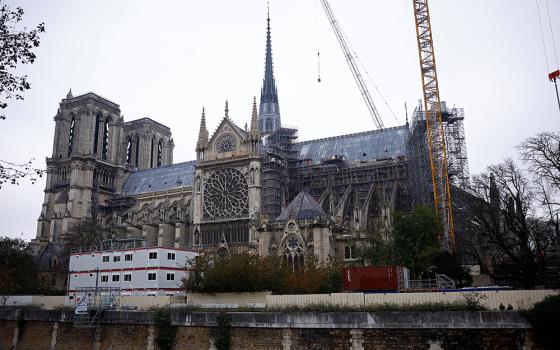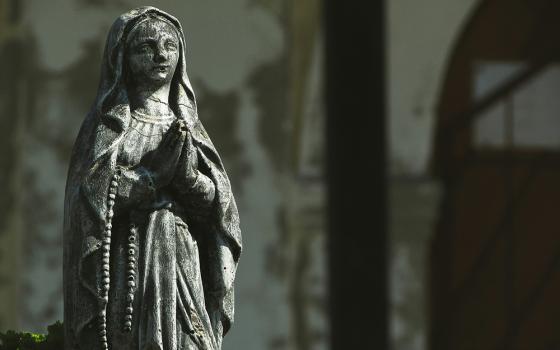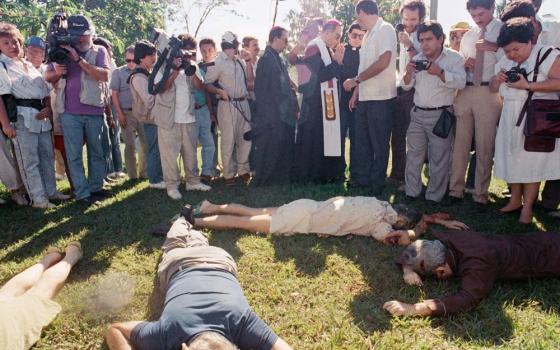 PAPIST PATRIOTS: THE MAKING OF AN AMERICAN CATHOLIC IDENTITY
PAPIST PATRIOTS: THE MAKING OF AN AMERICAN CATHOLIC IDENTITY
By Maura Jane Farrelly
Published by Oxford University Press, $35
The heart of Maura Jane Farrelly’s book is her account of efforts in the years after Britain’s 1688 “Glorious Revolution” (so-called!) to restrict the rights of Catholics in Maryland. She builds on the work of previous scholars in showing how anti-Catholicism was a unifying political principle after 1688, first in Britain, but also in America. In both countries, largely due to the on-going wars with France, in which the threat of a Jacobite restoration was always present, the essential Protestant nature of the British nation was brought to the fore.
Britons on both sides of the Atlantic came to understand that their religious and civil liberties were bound together -- and threatened -- by any encroachment of Romanism, priestcraft and arbitrary government.
The efforts of Maryland’s Protestants to further strip Catholics of their rights, therefore, were part of a wider pattern of anti-Catholic legal and cultural hostility. What was different in Maryland was that the local Catholic population had an argument at the ready that was unique in the British world: They appealed to the colony’s founding, the fact that their forebears would scarcely have made the effort, or paid the expense, of settlement in a colony where they expected to be abused. They recalled that they had been unmolested in their right to private worship -- the thought of public Catholic worship had become unthinkable by the early 18th century -- and they were keen not to contest for political rights that had been stripped away, knowing that was a bridge too far.
What is most striking in this account is also the most obvious. Farrelly writes: “In spite of the antagonistic cultural and legislative environment, Catholicism survived in Maryland -- and the Catholic population itself grew more than fivefold throughout the Penal Period -- because the people who made up the Catholic community refused not to be Catholic.” There was much to be gained by denouncing the faith and becoming Protestant, as the proprietors of the colony did. As a Protestant, one could vote, one could stand for office and serve in government, one did not have to send one’s children to Europe for an education. Yet, the Catholics stayed and in many ways their faith took on new life.
Farrelly is a bit uneven when she examines the devotional life of Maryland’s Catholics. She seems to see a need to set every devotion in the context of whether or not it would advance clerical control, or religious control in the face of a secularizing world. There are often more pedestrian explanations: Sodalities for devotion to the Eucharist may have been needed to inculcate Catholic devotion at a time when getting to weekly Mass was difficult for many Catholics due to distance and bad travel options.
The closer Farrelly gets to the Revolution, the better the book. She details the hypocrisy of the members of the First Continental Congress who wrote one letter to the inhabitants of Canada, promising respect and tolerance for their Catholic faith if they were to join with the colonies to the south, and another letter to the people of Great Britain that was filled with anti-Catholic stereotypes. I had never before read an account of the printer in Montreal who had the good sense to translate both letters, nor the outrage the hypocrisy provoked, but it goes a long way toward explaining why the Canadians never got on board the revolutionary project.
Farrelly demonstrates that, whatever their ideological predispositions, the Catholics of Maryland were likely to welcome any new governmental system that promised them more tolerance. They did not have to be Lockeans to grasp that they had a better chance in an America freed from traditional British allegiances, allegiances that were forged in an atmosphere of explicit anti-Catholicism. She does not downplay the role of anti-Catholicism in the rhetoric of many revolutionaries, but she insists its significance was muted, that it was just rhetoric.
Alas, rhetoric is often effective.
While Farrelly amply shows that the anti-Catholic prejudices of the revolutionary generation did not lead the general population to attack its native Catholic population, that rhetoric did inform the understanding many Americans had of such critical concepts as “liberty” and “conscience.” I wish she had given more attention to this realm of the ideological, but it is always wrong to fault an author for failing to write the book I wanted to read.
Occasionally, Farrelly’s work could have benefited from a more careful edit. She has a tendency to make a sweeping claim only to undercut it in a different part of the book. Farrelly overstates the uniqueness of the people she examines. The distinction between the temporal and the spiritual realms was not unknown in earlier ages. Think the snows at Canossa or the struggle between Henry II and Thomas Becket. She makes much of British Catholic resistance to a papal brief, as if such a thing was unknown in France or Spain, but throughout history, in every form of government, politicians have looked for and often found ways to restrict the freedom of the church.
Nonetheless, Farrelly has written an important and well-researched book that does an admirable job of making the lives of the early Catholics in Maryland come alive. Her research demonstrates just how varied and difficult were the choices Catholics had to make and, just so, her book rebuts the kind of histrionic, simplistic claims we have heard from some pulpits this year regarding religious liberty. Our history is a complicated history, and it is such complications that often serve as a bump in the road of any ideologue.
[Michael Sean Winters writes the “Distinctly Catholic” blog at NCRonline.org. He is a visiting fellow at The Catholic University of America’s Institute for Policy Research and Catholic Studies.]




